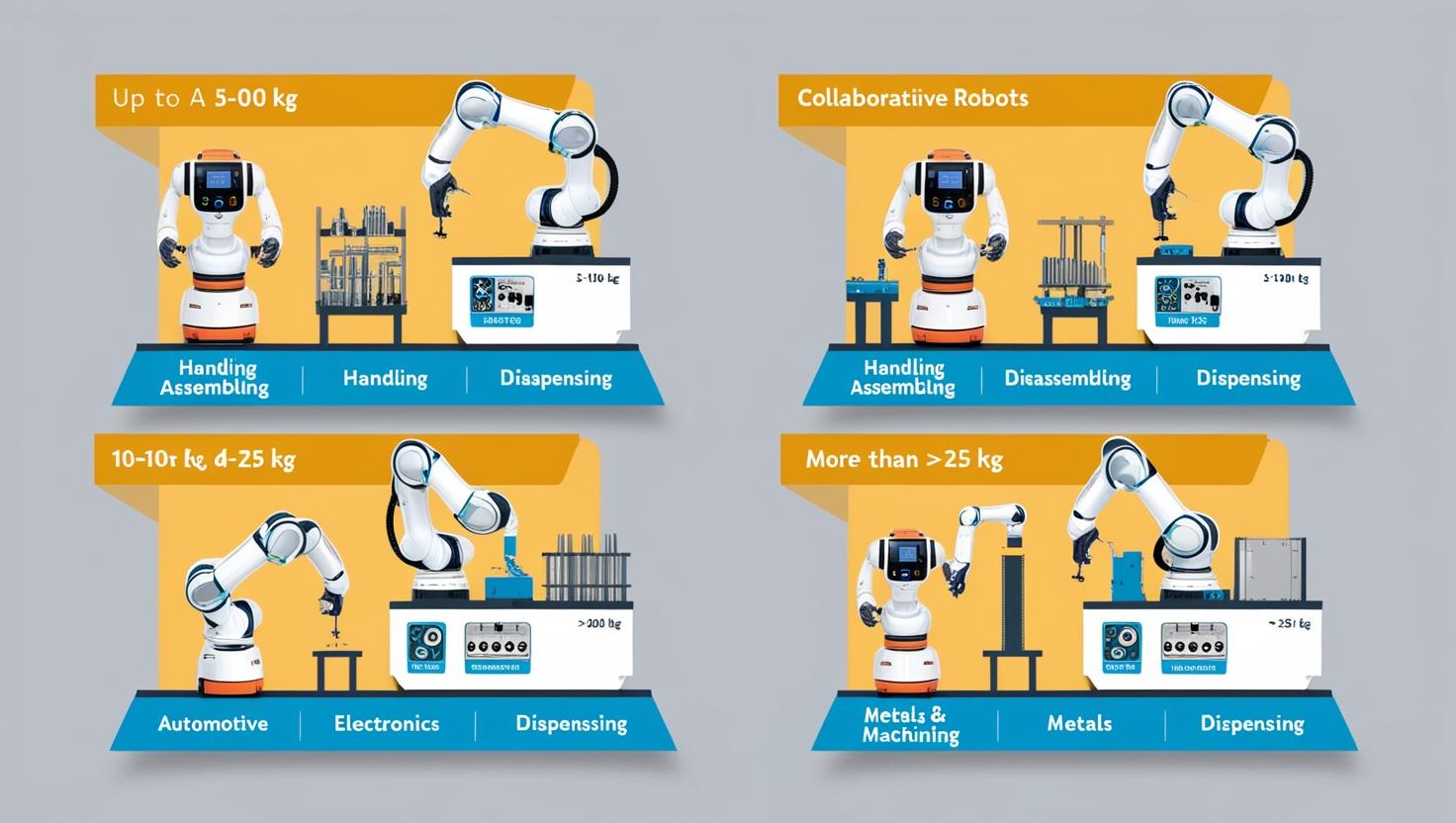The collaborative robot market is rapidly gaining traction across various industries, driven by the growing need for flexible automation solutions that safely and effectively work alongside humans. Unlike traditional industrial robots, which operate in isolation from workers due to safety concerns, cobots are designed to assist human operators by sharing workspace, automating repetitive tasks, and enhancing productivity without extensive safety barriers. This shift toward human-robot collaboration is fueling significant growth and innovation in the collaborative robot market.
The Rise of Collaborative Robots in Industry
The concept of collaborative robots emerged as industries sought ways to improve efficiency while maintaining safety and flexibility on the factory floor. Cobots are equipped with advanced sensors, vision systems, and AI capabilities that enable them to detect human presence, adjust their movements, and operate safely in close proximity to workers. This adaptability has made cobots increasingly attractive to small and medium-sized enterprises (SMEs) and large-scale manufacturers alike.
The appeal of cobots lies in their ability to handle a variety of tasks—from simple pick-and-place operations to complex assembly, inspection, and packaging—without the need for costly infrastructure changes. Their user-friendly interfaces and ease of programming further reduce deployment time and allow for quick reconfiguration, aligning well with the dynamic production environments of today’s industries.
The global collaborative robot market is projected to grow from USD 1.42 billion in 2025 to USD 3.38 billion by 2030, at a CAGR of 18.9%
Download PDF Brochure @ https://www.marketsandmarkets.com/pdfdownloadNew.asp?id=194541294

Driving Factors Behind Market Growth
Several factors contribute to the accelerated adoption of collaborative robots. Foremost among these is the increasing focus on workplace safety. With stringent regulatory standards and a growing awareness of occupational health, businesses are turning to cobots to reduce the risk of injuries associated with manual labor and hazardous tasks.
Additionally, the demand for greater operational efficiency and cost savings is motivating industries to automate processes that were previously too delicate or complex for traditional robots. Cobots offer a cost-effective solution by complementing human skills rather than replacing workers, allowing companies to optimize their workforce and improve throughput.
Technological advancements are also playing a critical role. Innovations in AI, machine learning, and sensor technologies have enhanced cobots’ capabilities, enabling them to perform more sophisticated tasks with higher precision and reliability. The integration of collaborative robots with the Internet of Things (IoT) and Industry 4.0 frameworks is further expanding their functionality and data-driven performance optimization.
Industry Applications Driving Adoption
The collaborative robot market spans a wide array of industries. The automotive sector, long a pioneer in automation, is leveraging cobots to assist with assembly, welding, and quality control processes, thereby improving speed and reducing errors. Electronics manufacturing benefits from cobots’ precision and delicate handling capabilities, essential for assembling small and sensitive components.
Healthcare is another emerging application area. Cobots are increasingly used in pharmaceutical production, laboratory automation, and even direct patient care, where their ability to perform repetitive tasks allows healthcare professionals to focus on more complex patient interactions.
Other sectors such as food and beverage, consumer goods, and logistics are also adopting cobots to enhance packaging, sorting, and material handling processes. The flexibility of cobots makes them suitable for environments where product variability and small batch sizes demand quick changeovers and adaptable automation solutions.
Regional Market Insights and Trends
North America and Europe currently dominate the collaborative robot market, driven by high industrial automation penetration, supportive regulatory environments, and significant investments in advanced manufacturing technologies. In these regions, the shift toward smart factories and digital transformation strategies is boosting cobot deployment.
Asia-Pacific, however, is rapidly emerging as a key growth market. Countries like China, Japan, South Korea, and India are witnessing increased adoption due to expanding manufacturing bases, rising labor costs, and government initiatives promoting automation. The region’s large pool of SMEs is particularly well-positioned to benefit from the affordability and scalability of cobot solutions.
Challenges and Future Outlook
Despite the promising growth, the collaborative robot market faces certain challenges. High initial investment costs and concerns about workforce displacement can hinder adoption in some sectors. Additionally, the integration of cobots into existing production lines requires careful planning to ensure compatibility and safety.
To overcome these barriers, manufacturers are focusing on developing more affordable, versatile, and easy-to-deploy cobot solutions. Training programs and awareness campaigns are also helping address workforce apprehensions by highlighting how cobots enhance job roles rather than replace them.
Looking ahead, the collaborative robot market is poised for sustained expansion, driven by continuous technological innovation and increasing industry acceptance of human-robot collaboration. As cobots become smarter, more autonomous, and seamlessly integrated into digital manufacturing ecosystems, they will play a crucial role in shaping the factories of the future.
The collaborative robot market is gaining significant momentum as industries worldwide recognize the benefits of human-robot collaboration. By combining the strengths of human intelligence and robotic precision, cobots are transforming manufacturing and service environments, driving productivity, safety, and flexibility. As technology evolves and adoption spreads across diverse sectors, the collaborative robot market is set to become a cornerstone of the modern industrial landscape.
